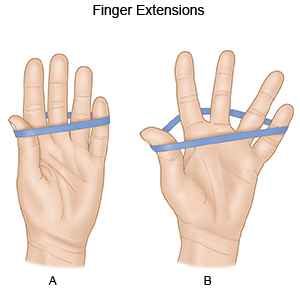Reach and close. Paul Katz with Hayden Idson.
The Thumb and Comfortable Extensions
Comfortable extensions depend on several interrelated motions. This short video focuses exclusively on an important one that is frequently overlooked.
- Extensions (reaching forward or back for a note) are accomplished by opening an additional half-step between 1st and 2nd finger.
- The stretch is always between 1st and 2nd finger, even when raising the pitch of the 3rd or 4th finger.
- The natural position of the thumb is under the 1st finger or anywhere comfortable between 1 and 2.
- When extending the 2nd finger forward to raise a pitch, the thumb should slide along the back of the neck, staying with the 2nd, 3rd and 4th fingers.
- When extending the 1st finger back to lower the pitch of the 1st finger, the thumb may remain with fingers 2, 3 and 4.
- Reach and close is a continuous motion that depends on timing to take you to the new note. Opening too early necessitates staying stretched, which tightens the hand.
- A reach and close motion does not fatigue or block, as the stretch is short-lived.
- Closing after the stretch allows the hand to remain supple and soft.
- Reach and close extensions make it possible to maintain a continuous vibrato.
- Reach and close is a single, integrated motion, not two separate motions.
- Think of extensions as short-lived transportation, not fixed positions.
- Reach and close can keep the hand relaxed.
- Holding extensions open can tighten, fatigue, block vibrato, and even cause tendonitis.
Cellosophy
"Too often, players absorbed with the next extension lose sight of the beauty of the note at hand. They widen their fingers in preparation rather than contracting their hand for a more favourable position for vibrato." -Leonard Rose



